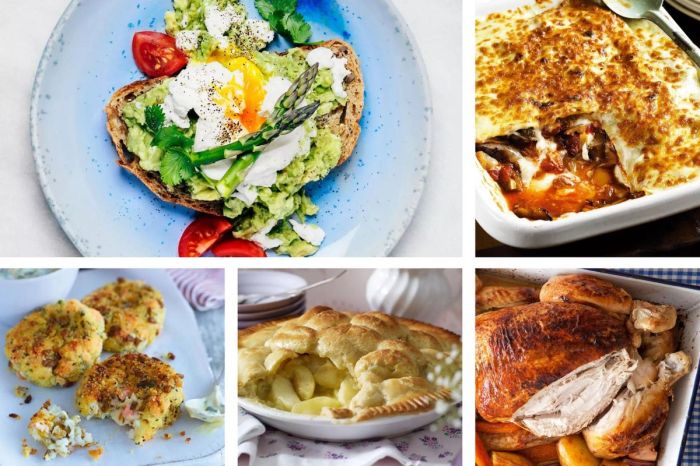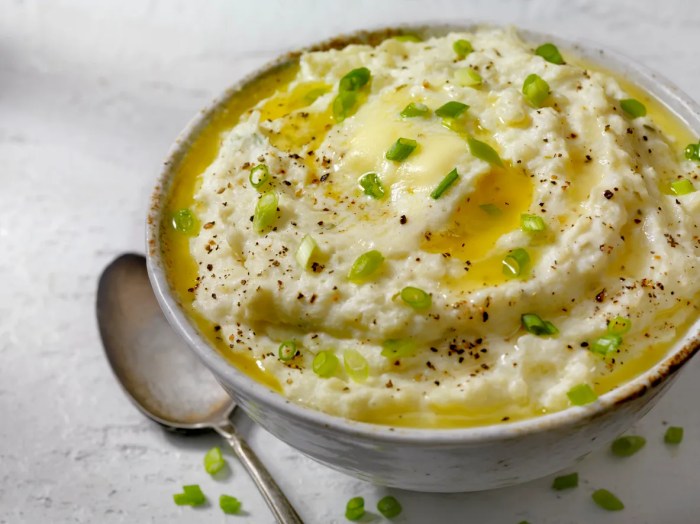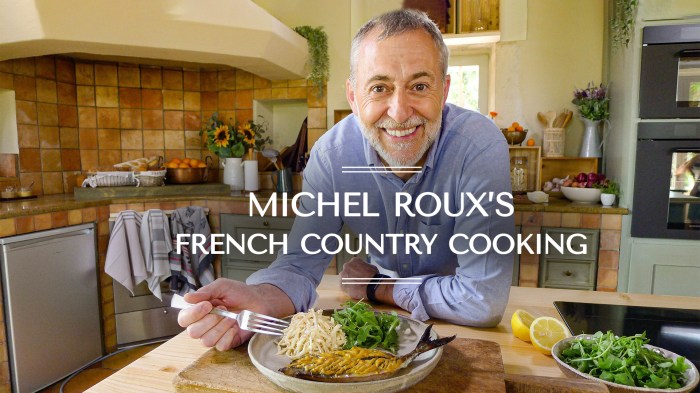Cookery recipes, the blueprints of culinary creation, have evolved alongside human civilization, reflecting our changing tastes, technologies, and cultural landscapes. From ancient fire-cooked meals to modern molecular gastronomy, recipes have served as vessels for preserving traditions, fostering connections, and exploring the boundless possibilities of flavor.
This exploration delves into the fascinating history of cookery recipes, examining their role in shaping culinary practices and their enduring influence on our food culture. We will journey through the evolution of recipes, explore their importance in preserving cultural heritage, and uncover the diverse types of recipes that enrich our culinary experiences.
The Evolution of Cookery Recipes
The art of cooking has evolved alongside humanity, with recipes serving as a crucial guide in transforming raw ingredients into delicious meals. From ancient times to the modern era, cookery recipes have reflected cultural shifts, technological advancements, and changing dietary trends, showcasing the ingenuity and adaptability of human culinary practices.
The Rise of Written Recipes
Before the invention of writing, culinary knowledge was passed down orally through generations. Ancient civilizations, however, developed systems of writing that allowed for the documentation of recipes. For example, ancient Egyptian papyri contain recipes for bread, beer, and various dishes, providing valuable insights into their culinary traditions.
The earliest known cookbooks, such as the “Apicius” from ancient Rome, documented elaborate recipes for Roman cuisine, highlighting the sophistication of their culinary techniques.
The Influence of Trade and Exploration
Trade routes and exploration played a pivotal role in the evolution of cookery recipes. The exchange of goods and ideas between different cultures led to the introduction of new ingredients, cooking techniques, and culinary traditions. For instance, the Silk Road facilitated the transmission of spices and ingredients from the East to the West, enriching culinary practices in both regions.
European explorers, in their voyages to the Americas and Asia, brought back new ingredients like tomatoes, potatoes, and chili peppers, which transformed European cuisine.
The Impact of Printing and Technology
The invention of the printing press in the 15th century revolutionized the dissemination of recipes. Printed cookbooks became more accessible to a wider audience, leading to the standardization of recipes and the development of culinary traditions. The 18th and 19th centuries saw the rise of scientific cookery, with recipes increasingly incorporating precise measurements and detailed instructions.
The development of new technologies, such as refrigeration and canning, also significantly impacted food preservation and culinary practices.
The Modern Culinary Landscape, Cookery recipes
Contemporary cookery recipes reflect the diverse culinary influences of the world. The rise of global cuisines, the popularity of fusion cooking, and the increasing emphasis on healthy eating have all contributed to the evolution of recipes. The internet and social media have also transformed the way recipes are shared and accessed, creating a vast online community of food enthusiasts and chefs.
Cultural Influences on Recipes
Recipes are deeply intertwined with cultural traditions and values. For example, the use of specific ingredients, cooking techniques, and presentation styles often reflects a culture’s history, beliefs, and social norms. The availability of ingredients and dietary restrictions also play a significant role in shaping culinary practices.
Technological Advancements in the Kitchen
Technological advancements have revolutionized the way we cook. The invention of the microwave, food processor, and other kitchen appliances has made cooking faster, easier, and more efficient. Online platforms and recipe apps provide access to a vast library of recipes, making it easier to find and experiment with new dishes.
Dietary Trends and Health Concerns
Dietary trends and health concerns have also influenced the evolution of recipes. The growing awareness of the importance of healthy eating has led to an increase in recipes that emphasize whole grains, fruits, vegetables, and lean protein. Vegan and vegetarian recipes have also gained popularity, reflecting the growing interest in plant-based diets.
The Importance of Cookery Recipes
Cookery recipes are more than just instructions for preparing food. They serve as a vital link to our culinary past, shaping our present and influencing our future. They hold the key to preserving culinary traditions, fostering cultural identity, and connecting generations through the shared experience of cooking and eating.
Preserving Culinary Traditions and Cultural Heritage
Recipes are the blueprints of our culinary heritage. They encapsulate the collective wisdom of generations, passed down through families and communities. Each recipe is a story, a testament to the ingenuity and creativity of our ancestors. For instance, the classic French dish “Coq au Vin” has its roots in medieval times, when wine was used to preserve meat.
Over centuries, this recipe has evolved, reflecting changes in ingredients, cooking techniques, and cultural influences. This evolution is evident in the various regional variations of “Coq au Vin” found across France. By preserving and sharing these recipes, we ensure that our culinary heritage continues to thrive.
Connecting Generations and Fostering a Sense of Community
Cookery recipes are a powerful tool for connecting generations. They provide a shared language, a common ground for families and communities to come together. Sharing recipes, preparing meals together, and passing down culinary skills are essential elements in building strong family bonds and fostering a sense of belonging.
The act of cooking and sharing food creates a sense of connection, bringing people together around a common table. For example, the tradition of baking cookies or pies during the holiday season is a cherished practice in many cultures.
This practice brings families and friends together, strengthening relationships and creating lasting memories.
Diverse Applications of Cookery Recipes
| Application | Description | Examples |
|---|---|---|
| Personal Cooking | Recipes empower individuals to create delicious and satisfying meals at home. | Following a recipe for a new dish, adapting a recipe to personal preferences, experimenting with different flavor combinations. |
| Professional Culinary Arts | Recipes are essential for chefs and culinary professionals in restaurants, hotels, and other food service establishments. | Developing new menu items, maintaining consistency in dish preparation, training culinary staff, and adhering to food safety regulations. |
| Food Preservation | Recipes for pickling, canning, and other preservation techniques ensure that food can be enjoyed year-round. | Pickling cucumbers, canning fruits and vegetables, making jams and jellies. |
| Cultural Exchange | Recipes facilitate the sharing and understanding of different cultures through food. | Cooking and sharing dishes from various countries, participating in international food festivals, exploring culinary traditions through travel. |
Types of Cookery Recipes

Cookery recipes come in a variety of forms, each tailored to different culinary needs and preferences. They can be classified based on their cuisine, complexity, and intended purpose. This categorization helps individuals navigate the vast world of recipes and find those that align with their skills, time constraints, and dietary preferences.
Cuisine-Based Categories
The cuisine of a recipe often dictates its ingredients, cooking techniques, and flavors.
- International Cuisine: Recipes from around the world, such as Italian pasta dishes, Japanese sushi, Mexican tacos, and Indian curries. These recipes offer a diverse range of flavors and cooking styles, allowing individuals to explore global culinary traditions.
- Regional Specialties: Recipes that are unique to a specific region or locality. Examples include Southern fried chicken from the United States, paella from Spain, and cassoulet from France. These recipes often reflect the local ingredients and culinary traditions of a particular area.
- Fusion Cuisine: Recipes that combine elements from different culinary traditions. For instance, a Thai-inspired stir-fry incorporating Japanese ingredients or a Mexican-Italian pizza. Fusion cuisine offers a creative approach to cooking, blending diverse flavors and techniques.
Complexity-Based Categories
The complexity of a recipe refers to the number of ingredients, the length of the cooking process, and the required skill level.
- Simple Recipes: Recipes that are quick and easy to prepare, often with a limited number of ingredients and straightforward instructions. These recipes are ideal for busy weeknights or novice cooks. Examples include scrambled eggs, pasta with tomato sauce, and sandwiches.
- Intermediate Recipes: Recipes that require slightly more time and effort, involving multiple steps and ingredients. These recipes often involve techniques like braising, roasting, or baking. Examples include chicken pot pie, lasagna, and stir-fries.
- Advanced Recipes: Recipes that are complex and time-consuming, often requiring specialized ingredients, advanced cooking techniques, and a high level of culinary expertise. Examples include soufflés, pastries, and elaborate multi-course meals.
Purpose-Based Categories
The intended purpose of a recipe can influence its ingredients, cooking time, and presentation.
- Everyday Meals: Recipes that are designed for regular home cooking, often focusing on affordability, ease of preparation, and nutritional value. Examples include breakfast cereal, sandwiches, and stir-fries.
- Special Occasion Meals: Recipes that are designed for special events or holidays, often featuring more elaborate ingredients and presentation. Examples include roast turkey, cakes, and gourmet desserts.
- Baking Recipes: Recipes that focus on baked goods, such as breads, cakes, cookies, and pastries. Baking recipes often require precise measurements and specific techniques to achieve desired results.
Characteristics of Cookery Recipes
The following table summarizes the key characteristics of different types of cookery recipes:
| Recipe Type | Ingredients | Cooking Techniques | Expected Outcomes |
|---|---|---|---|
| Simple | Few, readily available | Basic, quick | Quick, easy meal |
| Intermediate | Moderate number, some specialty | More complex, longer cooking time | Flavorful, satisfying meal |
| Advanced | Many, specialized, high-quality | Advanced techniques, precise measurements | Exceptional culinary experience |
| Everyday | Affordable, readily available | Quick, efficient | Nourishing, satisfying meal |
| Special Occasion | High-quality, specialty | Elaborate, time-consuming | Impressively presented, delicious meal |
| Baking | Precise measurements, specific ingredients | Baking techniques, precise timing | Baked goods with desired texture and flavor |
The Art of Writing Cookery Recipes

Crafting a cookery recipe is more than just listing ingredients and instructions; it’s an art form that requires clarity, conciseness, and a touch of creativity. A well-written recipe is a guide that empowers cooks of all levels to create delicious and satisfying meals.
Writing Clear and Concise Recipes
Clarity and conciseness are paramount in cookery recipes. Readers should be able to understand each step without ambiguity or confusion. Here are some principles to follow:
- Use Active Voice:Active voice makes instructions direct and engaging. For example, instead of “The onions should be chopped,” write “Chop the onions.”
- Precise Measurements:Use standard measuring units and be specific with quantities. Instead of “a little salt,” use “1/2 teaspoon salt.”
- Step-by-Step Instructions:Break down the recipe into logical steps, ensuring each step is clear and easy to follow.
- Use Simple Language:Avoid culinary jargon or complex terms that might confuse readers.
Engaging and Accessible Recipes
A well-written recipe should be engaging and accessible to a wide audience. Here are some tips:
- Include a Recipe Introduction:Start with a brief introduction that describes the dish, its origins, or any special considerations.
- Provide Helpful Tips and Tricks:Share tips on variations, substitutions, or common pitfalls to help cooks avoid mistakes.
- Use Visuals:Include high-quality photographs or illustrations to showcase the finished dish and highlight key steps.
- Encourage Reader Interaction:Invite readers to share their experiences, variations, or questions in the comments section.
Examples of Effective Writing Techniques
Here are some examples of effective writing techniques:
“Preheat the oven to 350 degrees Fahrenheit (175 degrees Celsius). Grease a 9×13 inch baking dish.”
This example uses active voice, precise measurements, and clear instructions.
“For a spicier flavor, add a pinch of cayenne pepper to the chili.”
This tip provides a helpful variation and encourages reader interaction.
Expand your understanding about candy grapes recipe with the sources we offer.
The Future of Cookery Recipes
The culinary landscape is constantly evolving, driven by technological advancements, changing dietary preferences, and an ever-growing interest in food. Cookery recipes, the cornerstone of culinary creativity, are also undergoing a transformation, embracing the digital age and catering to a diverse range of tastes and needs.
The Rise of Online Platforms
Online platforms have revolutionized the way we access and share cookery recipes. Websites and mobile applications like Allrecipes, Food Network, and Epicurious offer a vast library of recipes, making it easier than ever to find inspiration and learn new culinary skills.
These platforms also facilitate user interaction, allowing cooks to share their own recipes, rate and review others, and participate in online cooking communities. The rise of online platforms has democratized cookery recipes, making them accessible to a wider audience and fostering a more collaborative and interactive culinary culture.
Personalized Meal Plans
The future of cookery recipes is increasingly personalized. Technology is enabling the creation of customized meal plans based on individual dietary needs, preferences, and health goals. Apps like MyFitnessPal and Noom integrate with food databases to track calorie intake, macronutrients, and other dietary factors.
These platforms can generate personalized meal plans tailored to specific dietary restrictions, allergies, and preferences. This personalized approach allows individuals to make informed choices about their food, promoting healthier eating habits and empowering them to take control of their culinary journey.
The Growing Popularity of Plant-Based Diets
The increasing popularity of plant-based diets is driving a surge in demand for plant-based cookery recipes. Veganism and vegetarianism are gaining traction, fueled by concerns about animal welfare, environmental sustainability, and health benefits. This shift in dietary preferences has led to an explosion of plant-based cookery recipes, featuring innovative dishes that showcase the versatility and deliciousness of fruits, vegetables, legumes, and grains.
The rise of plant-based diets is pushing the boundaries of culinary creativity and expanding the repertoire of cookery recipes to encompass a wider range of ingredients and flavors.
The Impact of Technology on Cookery Recipes
Technology is playing a transformative role in the creation, sharing, and consumption of cookery recipes.
Creation
AI-Powered Recipe Generation
Artificial intelligence (AI) is being used to generate new cookery recipes based on user preferences and dietary restrictions. AI algorithms can analyze vast databases of existing recipes and ingredients, identifying patterns and creating novel combinations. This technology has the potential to revolutionize recipe creation, making it more efficient and personalized.
Virtual Reality (VR) and Augmented Reality (AR)
VR and AR technologies can enhance the recipe creation process by providing immersive experiences. Imagine using VR to visualize a dish before you even start cooking, or using AR to overlay instructions onto your countertop. These technologies can make cooking more engaging and intuitive.
Sharing
Social Media Integration
Cookery recipes are increasingly shared on social media platforms like Instagram, Pinterest, and TikTok. These platforms allow users to share their culinary creations, connect with other food enthusiasts, and discover new recipes. Social media has become a powerful tool for recipe sharing and inspiration.
Interactive Recipe Platforms
Interactive recipe platforms are emerging that allow users to adjust ingredients, cooking times, and other variables based on their preferences. These platforms offer a more personalized and dynamic recipe experience.
Consumption
Smart Appliances
Smart appliances like ovens, refrigerators, and blenders can be integrated with cookery recipes, allowing for automated cooking and meal preparation. These appliances can receive recipe instructions and execute them automatically, freeing up time and effort.
Food Recognition Apps
Apps that use image recognition technology can identify dishes and provide information about their ingredients, nutritional content, and recipes. This technology can help users make informed choices about their food and discover new recipes.
Potential Future Scenarios for Cookery Recipes
| Scenario | Description |
|---|---|
| Personalized Culinary Experiences | Cookery recipes will be tailored to individual preferences, dietary needs, and health goals, providing personalized culinary experiences. |
| AI-Driven Culinary Innovation | AI will play a significant role in recipe creation, generating novel and innovative dishes based on user preferences and dietary restrictions. |
| The Rise of Plant-Based Cuisine | Plant-based cookery recipes will continue to gain popularity, driving innovation and expanding the culinary landscape. |
| Fusion Cuisine and Cultural Exchange | Cookery recipes will reflect a growing trend towards fusion cuisine, blending culinary traditions from different cultures. |
| Sustainable Food Practices | Cookery recipes will emphasize sustainable food practices, promoting the use of locally sourced ingredients and minimizing food waste. |
End of Discussion

The world of cookery recipes is a dynamic and ever-evolving landscape, shaped by innovation, tradition, and our collective desire to create delicious and meaningful meals. As technology continues to reshape our culinary practices, recipes will undoubtedly adapt, offering new avenues for culinary exploration and connection.
By understanding the history, importance, and future of cookery recipes, we can appreciate their enduring role in shaping our culinary identities and fostering a shared love for the art of cooking.
